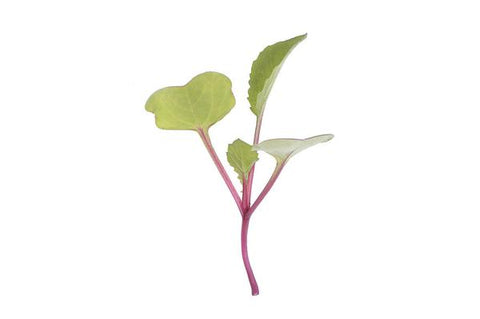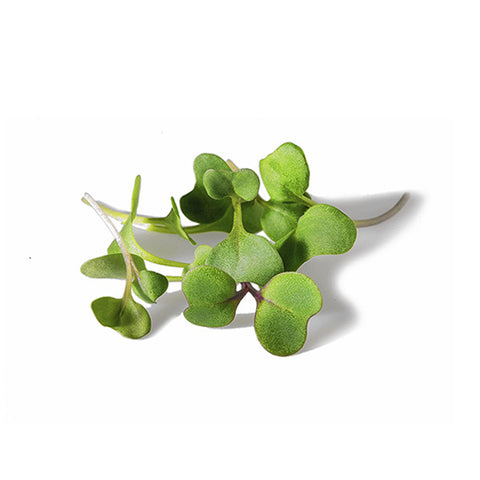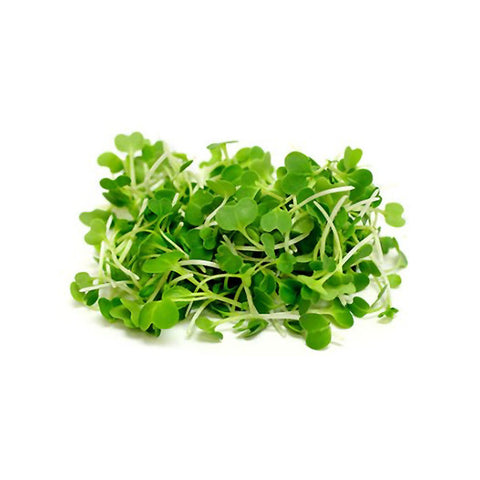Swore never to plant microgreens again because every time you did, your little greens turned out infected with mould or never saw the light of day? It's too soon to give up my friend.
Diagnosing microgreen problems could be tricky, but a basic understanding of common problems can provide helpful solutions. Don't worry, we have all been there. Give it one more shot - but this time understand the problems that you might face while growing your greens and learn how to prevent them. After all, like cooking, growing plants is about trying, making new discoveries and trying again. By the end of it, you will have healthy greens right at your fingertips.
Read through this guide for troubleshooting problems you may have faced while growing your microgreens.
Mould or Fungus
The first thing is to analyze if what you see is indeed mould or fungus. If you are worried about the white fuzzy growth around the roots of your seedlings, it is not mould. It's root hair and is a natural part of the process of germination and growth. Phew, everything is still under control.
There is a definite difference between root hair and mould. Root hair is generally lighter and typically surrounds the root area. Whereas, mould is darker, heavier and covers bare soil or the surrounding seeds. Mould on the microgreen is no different from the mould in the environment. It thrives on bacteria, high humidity, less air circulation, unclean containers or pots.
Here's the solution...
- It is very important to ensure that the pots or containers you are using for growth or germination of your microgreens are clean. Wash the containers thoroughly to prevent the development of moulds on microgreens.
- The right amount of sunlight and ventilation are effective ways to prevent your plants from moulds. After germination, move your microgreens to a spot where there are direct sunlight and good ventilation.
- Do not overseed your container. Too many seeds can crowd the plant and make your microgreens a host for mould. Give your microgreens their own space to grow.
- One of the most common causes of moulds is overwatering. Keep your microgreens moist and hydrated without flooding them.
Uneven Growth
There will be times when your microgreens will grow evenly, just like freshly cut grass, but other times they can surprise you! They can grow tall on some sides and short on the other, in one single tray. This could be due to the following reasons:
- How well you are spreading your seeds - There's a tendency to overpopulate the tray while sowing the small seeds like basil, broccoli and when they start germinating, they'll compete for the limited sources they are getting which can lead to uneven growth. Use a seed dispenser to dispense the seeds appropriately, it's like a dispenser you use for your herbs and spices. This will allow you to spread your seeds properly and ensure they are evenly sowed.
- Where you place your pot -To prevent uneven growth you need to ensure that your entire tray receives equal treatment of shade and light during and after the germination period.
- The quality of your potting soil - It is very important to use the potting mix which works for your greens. The better the potting mix, the healthier your microgreens. Try a variation of mixtures to figure out the soil that works for your plants.
Slow Germination
Ideally, microgreen seeds take about 2-3 days to start germinating. But if you do not notice any progress or your potting mix looks dry, you should try spraying some water to increase the moisture level. You can also try to pre-soak seeds before sowing them, it ensures that the seeds are not in their dormant state. Try to pre-soak your seeds for 8-12 hours before sowing, it works wonders.
Falling Over
Seeing microgreens fall is a sad sight to see. They are like a pile of dying greens losing their vitality and are soon-to-be wilted. The microgreens that are in the centre of the tray start to lean over to the sides of the tray. This could be due to the deficiency of water or light. Your microgreens can go to sleep because they are thirsty. It’s time to water them well but ensure that the soil is moist and not soggy.
Low light level is one of the reasons why your microgreens are falling over, these little greens need proper lighting to grow well. Keeping them in blackout after germination can lead to tall and floppy produce. It’s time to light up their world.
Watering Your Greens Right
A lot of indoor gardeners use watering cans or hosepipes to water their little greens from the top. The water force can be overwhelming for these little beings to handle and cause them to fall over.
A simple way to solve this issue is by using two containers for watering microgreens, one with holes and the other with no holes. All you have to do is put water in the tray with no holes and tuck the tray with holes in it. Now plant your microgreens in the tray with the holes. The water capillary will do the rest of the work. For better results keep replacing the stagnant water with fresh water every day.
Yellowish Microgreens
During germination, it is normal for your microgreens to be yellowish in colour as they have not been exposed to any sunlight and haven't had a chance to photosynthesize yet. Once you expose your microgreens to the sun, they will start to turn green.
The greens may have spindly stems if you keep them covered longer than the required time. How to prevent this? Check and cut down the amount of blackout period given to your microgreens.
Harvesting And Storing Microgreens
Cut microgreens right above soil level with a regular kitchen knife. Microgreens are very delicate and must get good care after being harvested. It is advisable to harvest your greens when you want to use them. If you are thinking of storing your greens, note that in a hot climate, they are not likely to last long. But if you must store your microgreens, keep them in a glass container or a mason jar.
That's pretty much everything you need to know about the problems faced while growing microgreens. We believe in the great old saying, practice makes a man perfect, you should too and give your gardening skills another shot. We firmly believe that this time you will succeed with flying colours or should we say colourful microgreens?
If you are just starting with your microgreen adventure, you can follow our detailed guide on How To Grow Microgreens at Home
Get high-quality, Non-GMO, heirloom seeds at AllThatGrows today and start planting your microgreens right away!


 Sign In
Sign In

















Comments
Very well explained the problems & it’s solutions while growing microgreens
Noticed that you are selling seperate seeds for microgreens. Can the regular seeds be used or do microgreens necessarily need to be grown with specific seeds only.
Hi Anitha,
Our microgreen seed collection is specifically curated for nutrition, taste, and yield. However, you can grow microgreens with any non-treated seeds.
Hope this helps!
Thanks & Regards
Team AllThatGrows